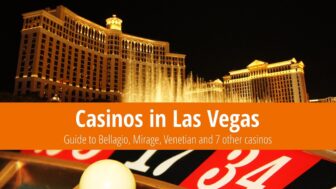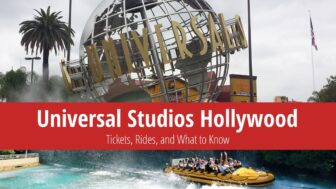Death Valley is the driest, hottest, and lowest place not only in the USA, but actually in all of North America. It is located on the border of California and Nevada, and essentially comprises Death Valley National Park.

Table of Contents
- Information About Death Valley National Park
- What to See in Death Valley
- When to Visit Death Valley National Park
- Death Valley National Park Entrance Fees
- How to Get to Death Valley National Park
- Death Valley National Park Lodging
- Tips and Recommendations Before You Go to Death Valley National Park
- Death Valley Photos
Information About Death Valley National Park
Death Valley National Park covers an area of 5,269 sqmi. It’s characterized by three words: hot, dry, desolate. Death Valley lies in the Mojave Desert and is surrounded by the Panamint and Amargosa mountains.
Throughout the year, the temperature in Death Valley does not drop below 41 °F, typically hovering around 59 °F in the winter months and 100 °F in the summer. The hottest month is July, when temperatures can soar to 117 °F in the shade. The highest temperature in Death Valley of 134 °F was measured in the shade on July 10, 1913. Higher temperatures have never been recorded anywhere else on Earth. Nor is there any other place with a similar average temperature.
The highest point in Death Valley National Park is Telescope Peak, which stands at 3,368 metres high. The lowest point in Death Valley is also the second lowest point in the Western Hemisphere after Lake Laguna del Carbón in Argentina. The Badwater Basin lies 85 metres below sea level.
The park is home to over 50 species of mammals, 307 species of birds, 36 species of reptiles, and three species of amphibians. Animals you may encounter in Death Valley include bighorn sheep, coyotes, red kites, foxes, and American cougars. Dominant plant species in Death Valley include sagebrush, shortleaf yucca, pinyon pine, and limber pine.
Death Valley first became a protected area on February 11, 1933 (referred to as a Monument in the USA) and wasn’t elevated to a national park until October 31, 1994. In 2021, Death Valley was visited by 1,146,551 people.
What to See in Death Valley
Badwater Basin
The most famous spot in all of Death Valley is Badwater Basin, situated 86 metres below sea level. It is the lowest point in North America. The surrounding elevation is interesting: Mount Whitney, the highest mountain in the continental USA, is only 135 kilometres away. You can stroll around the salt crust.
Badwater Basin is 15 mi from the settlement of Furnace Creek and can be reached in about 20 minutes by car. The main attraction is a sign displaying the elevation of Badwater Basin, at which nearly every visitor snaps a photo.
Dante’s Lookout
Dante’s View, also known as Dante’s Lookout (arguably the best viewpoint in all of Death Valley), is located at 1,669 metres above sea level. It sits atop Coffin Peak, and is 34 mi and an hour’s brisk drive from the settlement of Furnace Creek. From the parking lot, it’s about 360 metres directly to the viewpoint. It’s best to arrive early in the morning while the sun is still low.
Scotty’s Castle
Scotty’s Castle is a lavish mansion you wouldn’t expect to find in Death Valley. It was constructed in 1922 by comedian and con man Walter Edward Scott, nicknamed Death Valley Scotty. He fell in love with the area on the Nevada-California border while still earning a living as a cowboy in the Wild West Show.
In the early 20th century, he persuaded wealthy investors to fund his gold mines. He didn’t actually own any, but the investors didn’t find that out, and he made a tidy sum. Walter used the money to build a mansion called Scotty’s Castle, also known as Death Valley Ranch. It’s nestled in the Grapevine Mountains in the northern part of the national park.
It’s a considerable 54 mi from Furnace Creek to Scotty’s Castle. The villa was damaged by high water in the fall of 2015 and remains closed to the public.
You can stop at the lookout at Zabriskie Point. It was named after Christian Brevoort Zabriskie, a director of the Pacific Coast Borax Company, which mined the mineral borax in the area in the early 20th century. The site offers spectacular views of the surrounding cliffs.
When to Visit Death Valley National Park
The national park is open to the public all year round, but the temperatures during the summer months are extremely high. In July and August, 45°C in the shade is quite common.
The ideal months to visit are October through May, as rainfall levels remain near zero throughout the year.
Average Temperatures and Visitor Numbers in Death Valley National Park
Average temperatures in Death Valley’s Furnace Creek area were measured from 1911-2007. Visitor counts are based on averages from 2017-2021, with the data source being the National Park Service.
| Max Temp | Min Temp | Precipitation Days | Visitors | Popularity | |
|---|---|---|---|---|---|
| January | 66 °F | 39 °F | 3.2 | 81 742 | 🟨🟨 |
| February | 73 °F | 46 °F | 3.9 | 104 887 | 🟨🟨 |
| March | 81 °F | 55 °F | 3.0 | 166 279 | 🟧🟧🟧 |
| April | 90 °F | 63 °F | 2.3 | 135 177 | 🟨🟨 |
| May | 100 °F | 73 °F | 1.9 | 120 464 | 🟨🟨 |
| June | 109 °F | 81 °F | 1.4 | 85 279 | 🟨🟨 |
| July | 106 °F | 88 °F | 2.5 | 115 519 | 🟨🟨 |
| August | 115 °F | 86 °F | 2.2 | 136 046 | 🟨🟨 |
| September | 106 °F | 75 °F | 2.0 | 130 879 | 🟨🟨 |
| October | 93 °F | 61 °F | 1.4 | 129 102 | 🟨🟨 |
| November | 77 °F | 48 °F | 1.5 | 116 669 | 🟨🟨 |
| December | 64 °F | 37 °F | 2.5 | 109 410 | 🟨🟨 |
Death Valley National Park Entrance Fees
The entry fee to Death Valley National Park is $30 for a 7-day pass for a passenger car including all its occupants. A week-long pass for motorcycle entry is $25, while pedestrian entry is $15.00 per person per week.
If you’re planning to visit multiple national parks during your visit to the USA, I recommend purchasing the America the Beautiful pass. Pay once, and you can revisit all national parks as many times as you like over the next 12 months. This pass costs $80.
How to Get to Death Valley National Park
Death Valley in California is most easily reached by car; there are no regular buses or trains available. Below are the distances and driving times from nearby locations:
| Destination | Distance | Drive Time | Route |
|---|---|---|---|
| Fresno | 343 mi | 6 hours | View Route |
| Las Vegas | 118 mi | 2 hours | View Route |
| Los Angeles | 292 mi | 4 hours 45 minutes | View Route |
| San Francisco | 528 mi | 9 hours | View Route |
Death Valley should not be overlooked on your roadtrip across the USA. If you don’t have a car, you can arrange for a trip from Las Vegas to Death Valley.
Convenient parking is available at the Furnace Creek Visitor Center, Zabriskie Point, and Badwater Basin.
Death Valley National Park Lodging
🏨 Hotels
There are no hotels located directly within Death Valley National Park. The closest affordable hotel is in Death Valley Junction. Better options can be found in the towns of Pahrump to the southeast, Amargosa Valley to the east, and Beatty to the north.
⛺ Campsites
There are several campgrounds in Death Valley National Park, but not all are open year-round. The largest and most accommodating is Furnace Creek Campground, located 194 ft below sea level. It features running water, restrooms, and a barbecue area. The cost is $16.00 per tent in high season from mid-April to mid-October, and $22.00 per night in the low season.
You can reserve a campsite in advance at Recreation.gov.
Tips and Recommendations Before You Go to Death Valley National Park
ℹ️ Visitor Center
The visitor center for Death Valley is located at Furnace Creek and it is open daily from 8 a.m. to 5 p.m. A 20-minute documentary about Death Valley is shown throughout the day.
Facts About the National Park
At 5,269 sqmi, Death Valley National Park is the largest national park in the continental USA. Only four parks in Alaska are larger: Wrangell – St. Elias, Gates of the Arctic, Denali, and Katmai.
The Timbisha Indian tribe has inhabited the Death Valley area for approximately a thousand years. Modern times and government intervention have affected the tribe negatively, and today only a few hundred Timbisha reside in the area surrounding Death Valley.
Certain locations in Death Valley were used as filming locations for the Star Wars movies. If you’re a fan of the franchise, Steve Hall’s blog provides comprehensive information, including maps.
👍 Good to Know
Death Valley can become extremely hot, particularly in the summer months. Make sure to bring ample water, sunglasses, and sunscreen. I suggest replacing thin flip-flops with shoes with thicker soles.
Before heading to Death Valley, USA, be sure to download the entire area offline on Google Maps and save maps from park rangers to your phone for convenience.
Death Valley Photos






US National Parks
- National Parks of the USA – Map, List and Annual Pass
- America the Beautiful Pass 2025 – How It Works, Cost & Parks
- Timed-Entry Reservation for US National Parks (2025 GUIDE)
Travel Guides to USA National Parks

 10 Best Photo Places in the USA
10 Best Photo Places in the USA




Contribute with Your Question or Personal Experience